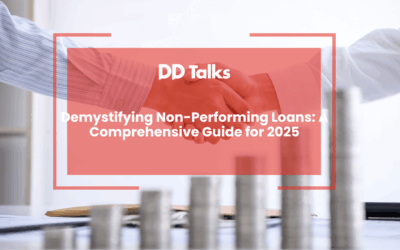Understanding Distressed Investments
In the realm of finance, distressed investments represent a unique and often lucrative opportunity. They involve investing in companies or assets that are experiencing financial difficulty. The goal is to acquire these at a lower price with the potential for significant returns once the entity recovers. Let’s delve into some critical aspects of distressed investments including strategies, debt, and equity insights.
How Do Distressed Investors Make Money?
Distressed investors make money by purchasing assets at a deep discount due to their present financial turmoil. As the distressed asset recovers and gains value, investors can sell at a higher price. Additionally, they may restructure the company’s debt or equity to enhance value and gain substantial returns through dividends or asset sales.
What Constitutes a Stressed Investment?
A stressed investment refers to an asset that is under significant economic pressure but has not yet reached a state of severe financial distress. Unlike distressed investments, stressed assets still retain moderate credit quality and operational challenges that need addressing.
Examples of Distressed Assets
An example of a distressed asset could be real estate properties facing foreclosure due to an inability to meet mortgage obligations. Such assets are typically sold at auction for a fraction of their market value.
Identifying Distressed Securities
Distressed securities include corporate bonds, bank loans, and other financial instruments issued by companies in financial turmoil. These are usually traded at a significant discount owing to the high risk associated with the issuer’s solvency.
Distressed Investment Strategies
There are several strategies employed in distressed investment:
- Active Investing: Taking a hands-on approach to restructuring and managing the distressed company.
- Passive Investing: Buying undervalued distressed assets and waiting for market correction.
- Credit Default Swaps: Using derivatives to hedge against possible defaults on distressed debt.
Exploring Distressed Debt
Distressed debt involves investing in bonds or other debt instruments from companies undergoing financial distress. This type of investment carries higher risk but offers potential high rewards if the issuing company manages a turnaround.
Examples of Distressed Debt
Examples include corporate bonds from companies in bankruptcy, non-performing loans (NPLs), and subordinated debt that ranks below other securities for claims on assets.
List of Distressed Debt Funds
Several funds specialize in distressed debt. Some notable examples include:
- Oaktree Capital Management
- PineBridge Investments
- Appaloosa Management
- Centerbridge Partners
Distressed Equity Investing Explained
Distressed equity investing involves purchasing the stock of financially troubled companies. Investors aim to gain control or significant influence over the company’s operations to steer it back to profitability, thus increasing the value of their holdings. This often requires deep industry knowledge, strategic planning, and risk management.
Discover More About Distressed Funds
If you’re interested in exploring distressed investments further, consider attending specialized events or requesting detailed agendas from experts in the field. For instance, you can learn more about distressed debt strategies at the NPL Days Hellas 2024 or request additional information here.
FAQs
- What is distressed debt?
- Distressed debt is a type of debt instrument issued by a company that is in financial distress and at risk of default.
- What is a stressed investment?
- Stressed investment refers to assets facing significant economic pressure but not yet in severe financial distress.
- What are examples of distressed securities?
- Examples include corporate bonds and loans from companies in financial trouble, typically traded at deep discounts.
How-To Guide: Getting Started with Distressed Investments
- Understand the Risks: Ensure you have a thorough understanding of the high risks involved in distressed investments.
- Conduct In-Depth Research: Analyze potential investments carefully, considering their financial statements, market conditions, and recovery prospects.
- Diversify Your Portfolio: Don’t put all your resources into one distressed asset; diversify to spread risk.
- Stay Informed: Keep up to date with market trends and developments in the distressed investment sector.
- Seek Expert Advice: Consider consulting with investment professionals who specialize in distressed assets for tailored strategies.




0 Comments